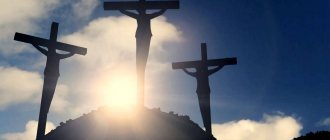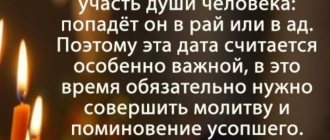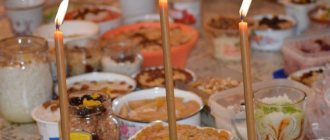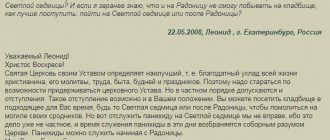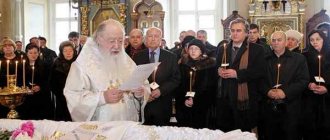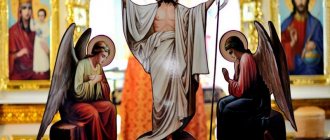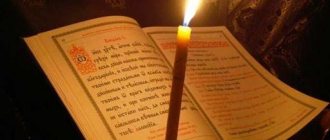Moscow, 03/01/2022, 07:10:19, editorial office of FTimes.ru, author Polina Belkina.
The Easter holiday is the miracle of the Holy Resurrection of Christ. Crucified on the cross, Jesus Christ rose again on the third day, giving everyone hope for eternal life. As we all know, it is customary to greet people on this day with “Christ is Risen!”, and to respond with “Truly He is Risen!”.
This greeting has been preserved from the times when the wonderful news was transmitted from mouth to mouth by the apostles. They joyfully exclaimed that Jesus had risen, and the answer meant deep conviction of this and unshakable faith.
But they greet this way not only on the day of Easter; it is correct to greet in this way until the Ascension of the Lord, that is, for forty days.
Ascension Day
For another forty days after his resurrection, Jesus Christ was on earth, he appeared before his disciples and spoke to them about the Kingdom of God. All this time the apostles rejoiced and exclaimed “Christ is Risen!” He appeared to them many times in Jerusalem and Galilee, ate food with them, and talked with them. But after his resurrection, Christ already showed a different, divine nature: he passed through walls and became invisible.
On the fortieth day after his resurrection, Jesus ascended to heaven on the Mount of Olives near Jerusalem, thus ending his earthly journey.
Therefore, it is correct for all Christians to repeat after the apostles “Christ is Risen!” until the Feast of the Ascension. In 2022, this day falls on June 10th. The Ascension is also considered the day when Jesus Christ returned to his Heavenly Father.
After the ascension of Jesus Christ and before Trinity, it is no longer customary to greet “Christ is Risen!”, since the earthly life and ministry of Jesus were already completed. Then the emphasis in worship and prayers shifts to the Trinity of God.
Starting from the Feast of the Ascension, all prayers begin with the Trisagion.
What you can’t do on Ascension, after which you can’t say “Christ is risen!”
One of the special features of the holidays is that it does not provide for any restrictions. It is not only possible, but also necessary to work.
Allowed:
- do the cleaning;
- engage in planting work;
- do everything necessary in the garden and yard;
- engage in charity: give alms, feed the hungry and provide everyone with all possible help.
It is important to remember that on church holidays you need to plan your day in such a way as to find time to visit the temple. If it is not possible to do both spiritual and worldly things, then it is better to postpone the second and devote the day to the celebration of the Ascension.
There is one prohibition on this holiday: you cannot remember the dead on such a day. This is due to the fact that the holiday is joyful, and not a memorial day.
At the same time, there is a belief that on the Ascension of Christ, the souls of relatives who have passed into another world descend from Heaven to earth to be with their loved ones.
Trinity Day
The holidays of Ascension and Trinity are often confused, and they believe that “Christ is Risen!” follows until Pentecost. The fact is that until the end of the 4th century these holidays were not separated. John Chrysostom and other saints insisted that the Ascension and the Trinity must be celebrated separately. In the 5th century, the celebration of the Ascension on the 40th day after Easter and Trinity on the 50th were finally established.
Trinity is one of the twelve major holidays of Orthodoxy, the so-called twelve holidays. Trinity is celebrated on the 50th day after Easter, after 7 weeks. In 2021, Trinity Sunday is celebrated on June 20. The Feast of Trinity marks the descent of the Holy Spirit on the apostles, which Jesus promised before his Ascension.
Subject:
- Ascension
- Easter
Easter. Resurrection of Christ.
The Resurrection of Christ (Easter) is the most important Christian holiday, established in remembrance of the Resurrection of Jesus Christ from the dead. The Charter of the church service depends on the date of Easter (from this day the countdown of the “pillars” of osmoglasia begins), and the end of the longest and strictest Lent (breaking the fast) and many other Orthodox holidays. Even for people far from religion, Holy Easter is associated with a nightly solemn service, a procession of the cross and Easter cakes, colored eggs and the ringing of bells.
Resurrection of Christ. Holiday icon
This is a moving holiday, its date changes from year to year and depends on the lunisolar calendar. The holiday does not belong to the twelve twelve holidays, but stands, as it were, above their circle, because its meaning is truly unique.
On Easter we remember the events described in the New Testament by all four evangelists - Matthew, Mark, Luke and John. The four Gospels tell about the days of Holy Week and the Resurrection of Christ.
On Friday of Holy Week - Holy, or Great Friday - the Savior was crucified on the cross. The disciples buried Him in a grotto - a cave, which was located next to Golgotha, the mountain where executions - crucifixions - were carried out.
On the night from Saturday to Sunday, that is, on the eve of the Jewish Passover, Mary Magdalene and two other women came to the cave to wash and anoint the body of the executed Christ with incense. These women in the Church are usually called Myrrh-Bearing Women.
Icon of the Myrrh-Bearing Woman at the Holy Sepulcher. 16th century
The disciples devoted to the Lord discovered that the stone that covered the entrance to the cave had been rolled away, and the coffin itself was empty. Two Angels appeared to them and announced the Resurrection of Christ: “When they were perplexed about this, two men suddenly appeared before them in shining clothes. And when they were afraid and bowed their faces to the ground, they said to them, “Why are you looking for the living among the dead?” (Luke 24:4-5).
The Resurrection of Christ is the semantic center of all Christianity. The Apostle Paul wrote in his First Epistle to the Corinthians: “If there is no resurrection of the dead, then Christ has not been raised; and if Christ has not been raised, then our preaching is in vain, and your faith is also in vain” (1 Cor 15:13-14).
What does the word "Easter" mean?
The word " Easter " literally translates as "passing by, passing, deliverance." In Hebrew, Passover is : פסח (Pesaḥ). In Greek: πάσχα. In Latin: Pascha.
The holiday of the Resurrection of Christ received the name “Easter” from the Jewish holiday of Passover. Passover among the Jews is dedicated to the Exodus of the Israelites from Egypt and their liberation from slavery. These events are described in the Old Testament.
Why did Christians take the name of a Jewish holiday? The fact is that the events of Holy Week - the betrayal of Judas, the arrest of Christ, the Passion of Christ and the crucifixion - occurred on the eve of the Jewish Passover. And the Resurrection of Christ is on the night of Easter.
Easter event: excerpt from the Gospel
The Christian holiday of Easter is a solemn remembrance of the Resurrection of the Lord on the third day after His suffering and death. The moment of the Resurrection itself is not described in the Gospel, because no one saw how it happened. The removal from the Cross and burial of the Lord took place on Friday evening. Since Saturday was a day of rest for the Jews, the women who accompanied the Lord and the disciples from Galilee, who witnessed His suffering and death, came to the Holy Sepulcher only a day later, at dawn of that day, which we now call Sunday. They carried incense, which, according to the custom of that time, was poured on the body of a deceased person.
After the Sabbath had passed, at dawn of the first day of the week, Mary Magdalene and the other Mary came to see the tomb. And behold, there was a great earthquake, for the Angel of the Lord, who came down from heaven, came and rolled away the stone from the door of the tomb and sat on it; his appearance was like lightning, and his clothes were white as snow; Frightened by him, those guarding them trembled and became as if they were dead; The angel, turning his speech to the women, said: Do not be afraid, for I know that you are looking for Jesus crucified; He is not here - He has risen, as He said. Come, see the place where the Lord lay, and go quickly, tell His disciples that He has risen from the dead and is going ahead of you to Galilee; you will see Him there. Here, I told you.
And, hastily leaving the tomb, they ran with fear and great joy to tell His disciples. When they went to tell His disciples, behold, Jesus met them and said: Rejoice! And they approached, grabbed His feet and worshiped Him. Then Jesus says to them: Do not be afraid; go, tell my brothers to go to Galilee, and there they will see me” (Matthew 28:1-10).
Easter of Christ. How many days is it celebrated?
Easter is the most important and solemn Christian holiday. It takes place every year at different times and is one of the moving holidays. Other moving holidays also depend on the day of Easter, such as: Palm Sunday, Ascension of the Lord, Feast of the Holy Trinity (Pentecost) and others. The celebration of Easter is the longest: for 40 days, believers greet each other with the words “Christ is Risen!” - “Truly he is risen!” The Day of the Bright Resurrection of Christ for Christians is a time of special celebration and spiritual joy, when believers gather for services to glorify the risen Christ, and the entire Easter week is celebrated “as one day.” The church service throughout the week almost completely repeats the nightly Easter service.
How is the date of Easter calculated?
The early Christian communities celebrated Easter at different times. Some together with the Jews, as Blessed Jerome writes, others - on the first Sunday after the Jews, since Christ was crucified on the day of Passover and resurrected the morning after Saturday. Gradually, the difference in the Easter traditions of local Churches became more and more noticeable, the so-called “Easter dispute” arose between Eastern and Western Christian communities, and a threat to the unity of the Church arose. At the First Ecumenical Council, convened by Emperor Constantine in 325 in Nicaea, the issue of a common celebration of Easter was considered. According to the church historian Eusebius of Caesarea, all the bishops not only accepted the Creed, but also agreed to celebrate Easter on the same day:
For the harmonious confession of the Faith, the saving celebration of Easter had to be celebrated by everyone at the same time. Therefore, a general resolution was made and approved by the signature of each of those present. Having completed these affairs, the basileus (Constantine the Great) said that he had now won a second victory over the enemy of the Church, and therefore celebrated a victorious celebration dedicated to God.
From that time on, all local Churches began to celebrate Easter on the first Sunday after the first full moon that occurred after the spring equinox. If the Jewish Passover falls on this Sunday, then Christians postpone the celebration to the next Sunday, since even in the rules of the Holy Apostles, according to the 7th rule, Christians are forbidden to celebrate Easter together with the Jews.
There is a special term - “Easter”. This is a system for calculating the date of Orthodox Easter.
Regarding the date of Easter, there is a resolution of the First Ecumenical Council, which was held by the Church in 325 in the city of Nicaea. It says: Orthodox Easter is celebrated on the first Sunday after the spring full moon, which occurs after or on the day of the vernal equinox. The rule applies only if this Sunday falls on the day AFTER the day of the Jewish Passover. If Sunday falls on the day BEFORE Jewish Passover, Orthodox Easter is celebrated on the first Sunday after the day of Jewish Passover.
It turns out that the date of Easter celebration lies in the range from April 4 to May 8 according to the new style.
To accurately calculate the date of Easter, you need to know not only the solar (equinox) calendar, but also the lunar calendar (full moon). Since the best experts on the lunar and solar calendar lived in Egypt at that time, the honor of calculating the Orthodox Easter was given to the Bishop of Alexandria. He was supposed to annually notify all local Churches about the day of Easter. Over time, Paschal was created for 532 years. It is based on the periodicity of the Julian calendar, in which the calendar indicators for calculating Easter - the circle of the Sun (28 years) and the circle of the Moon (19 years) - repeat after 532 years. This period is called the “great indiction”. The beginning of the first “great indiction” coincides with the beginning of the era “from the creation of the world.” The current one, the 15th great indiction, began in 1941. In Rus', Easter tables were included in liturgical books, for example, the Followed Psalter. Several manuscripts from the 17th–17th centuries are also known. called "The Great Circle of Peace". They contain not only the Paschal for 532 years, but also tables for calculating the date of Easter by hand, the so-called Five-Finger Paschal or “hand of Damascus.”
Hand of Damascus from the Great Circle of Peace manuscript
It is worth noting that the Old Believers have preserved to this day the knowledge of how to calculate by hand the date of Easter, any moving holiday, the ability to determine what day of the week a particular holiday falls on, the duration of Peter's Fast and other important information necessary for performing divine services.
Easter dates until 2023
2018 – April 8
2019 – April 28
2020 – April 19
2021 - May 2
2022 – April 24
2023 – April 16
Easter greeting - Christening
Easter greeting - christening - a custom that came from the Apostles. “Greet one another with a holy kiss,” wrote the Apostle Paul in his letter to the Romans (Rom. 16:16).
Christing means greeting each other with the words: “Christ is risen!” - “Truly he is risen!”, while kissing each other on the cheeks three times.
Christening. 19th century postcard
Believers greet each other in this way starting from Easter night and for another forty days until the holiday of Easter, the Feast of the Ascension of the Lord. On Easter night, Christ is celebrated at the end of Easter Matins. First, the clergy at the altar congratulate each other on the Resurrection of Christ. Then they leave the altar with the cross, the Gospel and icons, stand in front of the royal doors, facing those praying in the temple. The parishioners kiss the Gospel, the cross and the icons and greet each other with Christ.
The special Easter greeting is called Christening. At the end of Matins, after singing: “Let us embrace each other, shouting: brethren! and we will forgive all those who hate us through the resurrection,” believers greet each other, saying: “Christ is risen!” and answering “Truly he is risen!”, they kiss three times and exchange Easter eggs. This is how it is customary to greet each other throughout the 40 days following Easter, until the Ascension.
This greeting is an expression of rejoicing, joy from the news that the Savior has risen.
Easter meal
After the service, believers go to the refectory or home to break their fast.
Easter cakes and colored eggs are brought to the temple for consecration
During Holy Saturday and after the Easter service, Easter cakes, Easter cottage cheese, and eggs are blessed in churches. Artos is also blessed at Easter - this is a special leavened bread intended only for prayerful eating. During the service of Saturday of Bright Week, it is distributed to believers to keep at home.
The tradition of dyeing eggs for Easter
One of the main Easter traditions is colored eggs.
Traditional Easter treats
They symbolize the Holy Sepulcher, in which eternal life is hidden. The shell is a stone that was rolled at the entrance to the rock where Christ was buried. But underneath the shell lies new life. The red color that Easter eggs were traditionally painted in indicates the suffering and shed blood of Christ. And at the same time, it conveys the royal dignity of the Savior (in the east, red was considered a royal color).
What types of Easter eggs are there?
There are several traditional types of Easter eggs.
Painted eggs (or galunkas) are eggs painted in one color (mostly red), without a pattern applied to the shell. Since ancient times, natural dyes, primarily onion peels, have been used to prepare dyes. With its help, a rich terracotta color and yellow of varying intensity were obtained.
Pysanky are eggs painted with traditional folk ornaments or patterns (mostly geometric or floral). In V. Dahl’s explanatory dictionary you can find the following definition: “Pysanka is an Easter egg painted with different colors in a pattern: it is written with a wire hook, which is dipped in wax; when put in paint, it is painted only on the spaces.” Easter eggs were painted only raw; they were not eaten. After Trinity, it was customary to blow out such eggs. A painted egg was turned into a bird by gluing wings to the shell.
The egg had to be painted using a special technology, following the rules for combining the colors of the ornament and background.
If these rules were violated, then the egg no longer became a pysanka, but a little one. This means that they applied not a traditional pattern to it, but their own.
Specks are eggs with a plain background on which patterns of stripes or spots are applied.
Another type is rags , or shkryabanks . After dyeing such eggs, a certain pattern was scratched on their shell.
Eggs are decorative eggs made from wood, beads and other materials. The famous Faberge eggs can also be considered a variety of them.
Today, Easter eggs are painted in a variety of colors and in a variety of ways.
Where did this tradition come from?
The tradition of giving each other colored eggs on the day of the Resurrection of Christ spread thanks to Mary Magdalene.
Mary was the first to whom Christ appeared after his Resurrection and said: “Do not touch Me, for I have not yet ascended to My Father; But go to My brothers and say to them, “I am ascending to My Father” (John 20:17). Mary Magdalene brought the good news to the Apostles that she had seen the Lord. This was the first sermon about the Resurrection.
When the Apostles dispersed from Jerusalem to preach to all corners of the world, Mary Magdalene also left with them. Even before the Apostle Paul, a woman went to Rome, the center of the then civilization. The brave disciple of Christ even appeared to Emperor Tiberius and told about the life, miracles and teachings of Christ, about how He was slandered by the Jews and crucified by the verdict of Pontius Pilate.
Mary Magdalene to the Roman Emperor Tiberius
The Emperor doubted the story of the Miracle. Then Mary Magdalene took a white egg, which she brought to the palace as a gift, and with the words “Christ is Risen!” gave it to Tiberius. Before the eyes of the Roman ruler, the egg turned from white to bright red.
In the library of the monastery of St. Anastasia the Patternmaker, located in the northern part of Greece, near the city of Thessaloniki, a handwritten Greek charter of the 10th century has been preserved. It contains a prayer read on Easter Day for the blessing of eggs and cheese. The abbot, distributing the consecrated eggs, says to the brethren: “This is how we received it from the holy fathers, who preserved this custom from the very times of the apostles, for the holy Equal-to-the-Apostles Mary Magdalene was the first to show the believers an example of this joyful sacrifice.”
Folk traditions of celebrating Easter
The first Sunday after Easter is called Antipascha, and popularly – Red Hill. In Rus', it has always been a day of youth celebrations, round dances and matchmaking. Girls and boys who had reached marriageable age were supposed to take part in these festivities. According to church traditions, starting from Krasnaya Gorka, believers can get married.
Rolling eggs at Easter. 19th century postcard
A favorite Easter pastime was egg rolling, or “rolling.” The games began on the first day of Easter and sometimes continued throughout Bright Week. One game could last several hours. Wooden, skillfully painted eggs were often used, and sometimes entire sets of such eggs were prepared especially for the game.
The riding rules were as follows. The painted egg was rolled down an inclined wooden plank or along the ground - from a slight hill. Below, all the participants in the fun placed other eggs in a semicircle, one each. The goal was to knock the egg out of place. If this worked, the participant took the beaten egg for himself and continued the game. If he missed, the next participant entered the game, and the unsuccessfully rolled egg remained on the line.
History of Easter celebration
After Pentecost, that is, the descent of the Holy Spirit on the Apostles, which occurred on the fiftieth day after Easter, the followers of Christ for the first time began to conduct a special service - the Liturgy. At the Liturgy, the Sacrament of Communion was performed, which Christ himself established at the Last Supper. Liturgies were performed exactly according to the example of the Last Supper.
In the first centuries of Christianity, Easter was celebrated every week. On Friday, Christians fasted and remembered the suffering of the Savior on the cross. On Sunday we rejoiced and glorified the risen Christ. In the spring, during the Jewish Passover, Easter was especially solemn, because it was on the Jewish Passover that the crucifixion and Resurrection of Christ took place.
In the 2nd century, the holiday became annual in all Churches. At first there were, as it were, two Easters: “Easter of the Cross” and “Easter of the Resurrection.” The suffering and death of Christ were celebrated with a special fast and called “Easter of the Cross.” It coincided with the Jewish Passover, and they fasted until the night from Saturday to Sunday. On Sunday, the Easter of Joy, or “Resurrection Easter,” was celebrated, that is, the Resurrection of Christ.
Icon. First Ecumenical Council in Nicaea
The question of a single Easter day for all Christians was raised by Emperor Constantine the Great. In 325 he summoned bishops to the city of Nicaea in Asia Minor. We now call this the First Ecumenical Council. The bishops decided to coordinate the day of Easter celebration between Christian communities in different countries. It was decided to celebrate the Resurrection of Christ strictly after the Jewish Passover and always on Sunday. The day of Christian Easter was chosen to be the nearest Sunday after the first spring full moon.
At first, the Eastern Churches and Rome celebrated Easter on the same day, determining its date together. Then communication between them was interrupted, the East and Rome began to celebrate Easter each according to their own calculations, often on different days.
The word “Easter” itself became generally accepted to designate the holiday of the Resurrection of Christ in the 5th century. Gradually, Easter acquired the greatest importance among other Christian holidays; it began to be called “holidays”.
Features of the Easter service
Easter service is the most solemn of the year. It starts some time before midnight. The service until 12 o'clock at night is called the Midnight Office. On it, the priest and deacon go to the Shroud - a large cloth made of trani, on which an icon depicting the Savior in the tomb is embroidered or written. While singing prayers, they cense around the Shroud, lift it and take it to the altar. There they are placed on the Holy Throne, where the Shroud remains until the Feast of the Ascension of the Lord, which occurs 40 days after the Resurrection.
Patriarch Kirill conducts an Easter service at the Cathedral of Christ the Savior
Just before midnight, Easter Matins (or Matins) begins. From behind the closed royal doors, a stichera (a type of church hymnographic text) begins to sound: “Thy Resurrection, O Christ the Savior, the angels sing in heaven, and grant us on earth to glorify Thee with a pure heart.”
Then the royal doors open, and the clergy in light vestments, together with the parishioners, leave the temple and walk around it in a procession of the cross. In front they carry the cross, the Gospel, icons, banners (cloths with images of Christ or saints mounted on a pole). Each believer holds a candle or lamp in his hands. Everyone sings: “Thy Resurrection, O Savior Christ, the angels sing in heaven, and grant us on earth to glorify You with a pure heart.” The religious procession is accompanied by a special Easter bell ringing.
After going around the temple, the procession stops at the closed western gates of the temple. These gates symbolize the doors of the Holy Sepulcher. The bells fall silent, and the priest is the first to proclaim the good news: “Christ is risen from the dead, trampling down death by death and giving life to those in the tombs.” The clergy and all believers repeat this song three times. Then the priest sings the verses of the prophecy of King David: “May God rise again and let His enemies be scattered…”. People echo every verse: “Christ is risen from the dead...”
The doors are opened, and believers enter the brightly lit temple, just as the Myrrh-Bearing Women once entered the Holy Sepulcher and saw that the Savior was not there, that He had risen from the dead.
Further Easter Matins is the singing of the canon of St. John of Damascus. While singing the canon, the clergy walk around the temple, burn incense and proclaim: “Christ is risen!” To which the parishioners echo: “Truly he is risen!”
Matins ends with the words: “Let us embrace each other, saying: brethren! and we will forgive all those who hate us through the resurrection.” And everyone, first the clergy in the altar, then the believers in the church, begin to christen themselves, that is, kiss each other three times and greet each other with the joyful words “Christ is Risen!” - “Truly he is risen!”
Then in the church they read the catechumen word for Easter by St. John Chrysostom. It contains words that fully express Christ’s victory over death: “Where is your sting, O death? Where the hell is your victory? Christ is risen, and you are cast down. Christ is risen, and the demons have fallen. Christ is risen and the angels rejoice. Christ is risen, and life abides.”
After Matins, the Hours and Liturgy are celebrated, with the royal doors open. They will be open throughout Bright Week as a sign that Christ has forever opened the gates of the Kingdom of Heaven to all Christians.
The Hours of Holy Easter are prayers that replace the usual prayers before the Liturgy on Easter week.
A distinctive feature of the Easter service: it is all sung. At this time, churches are brightly lit with candles, which worshipers hold in their hands and place in front of the icons. The blessing after the liturgy is “brashen”, i.e. cheese, meat and eggs, the believers are given permission from fasting.
In the evening, Easter Vespers is celebrated. Its peculiarity is the following. The rector dresses in all sacred clothes and, after the evening entrance with the Gospel, reads the Gospel on the throne, which tells about the appearance of the Lord Jesus Christ to the Apostles in the evening on the day of His resurrection from the dead (John XX, 19-23). Divine service on the first day of St. Easter is repeated throughout the entire Easter week, with the exception of the reading of the Gospel at Vespers. For 40 days, before the Feast of the Ascension of the Lord, Easter troparia, stichera and canons are sung during services. The prayer to the Holy Spirit: “To the Heavenly King” is not read or sung until the Feast of the Holy Trinity.
Kontakion for the holiday:
Still3 in0 the coffin came down without death, but with the power of destruction, and3 the victor of xrte b9e was resurrected. Having given joy to the wives of the world, and given their gifts to the world, and to those who have fallen, given the Resurrection.
( Translation: Although You, the Immortal, descended into the grave, you destroyed the power of hell and, as the Victor, rose again, Christ God, saying to the myrrh-bearing women: “Rejoice.” You taught peace to your apostles, you give resurrection to the fallen).
In the arrival and departure prostrations, instead of “It is worthy to eat” (until the celebration of Easter), the irmos of the ninth song of the Easter canon is read:
Sveti1sz sveti1sz new їєrli1me, thank God for you. liky nn7e and3 ves1sz sіHne, the same thing is beautiful, њ the rise of your joy2 (bow to the ground).
( Translation: Light up, light up (with joy) the new Jerusalem; for the glory of the Lord has risen upon you; rejoice now and rejoice Zion: and You, Mother of God, rejoice in the resurrection of the One born of You).
Procession for Easter
The Easter religious procession is a joyful procession around the temple, which takes place on the night from Holy Saturday to the Resurrection of Christ.
Solemn religious procession on Easter night
Easter Matins begins just before midnight. From behind the closed royal doors a stichera (a type of church hymnographic text) sounds: “Thy Resurrection, O Christ the Savior, the angels sing in heaven, and grant us on earth to glorify Thee with a pure heart.”
Then the royal doors open, and the clergy, together with the parishioners, leave the temple and walk around it in a procession of the cross. In front they carry a large altar cross, an altarpiece of the Mother of God, the Gospel, other icons, banners (cloths with images of Christ or saints mounted on a pole). Each believer holds a candle or lamp in his hands. Everyone sings: “Thy Resurrection, O Savior Christ, the angels sing in heaven, and grant us on earth to glorify You with a pure heart.” The religious procession is accompanied by a special Easter bell ringing.
The procession stops at the closed western gates of the temple. These gates symbolize the doors of the Holy Sepulcher. The bells fall silent and the priest proclaims: “Christ is risen from the dead, trampling down death by death and giving life to those in the tombs.” The clergy and all believers repeat this song three times. Then the priest sings the verses of the prophecy of King David: “May God rise again and let His enemies be scattered…”. People echo every verse: “Christ is risen from the dead...”
The doors of the temple are opened, and believers enter the brightly lit temple, just as the Myrrh-Bearing Women once entered the Holy Sepulcher and saw that the Savior was not there, that He had risen from the dead.
Easter bells
The ringing of bells on Easter is solemn and joyful. Since ancient times, bell ringers have put all their skill and soul into it. The Easter bell has a special name - “trezvon”. This is the most complex type of ringing and is so named because it consists of three parts with a short pause between them.
Athos. Easter Bells
Bright Week - the week after Easter - is also called Ringing Week, because during these seven days everyone can climb the bell tower and try their hand at the art of ringing.
Holy Fire
The miracle of the descent of the Holy Fire, or the Holy Light, as it is also called, occurs every year on Holy Saturday, on the eve of Orthodox Easter. The first written eyewitness accounts of the appearance of the Holy Light date back to the 9th century.
The Holy Fire descended in the Church of the Holy Sepulcher in Jerusalem
The miracle takes place in Jerusalem in the Church of the Resurrection. According to legend, it was built on the site of Mount Golgotha, where the Savior was crucified, and the Holy Sepulcher - the cave in which He was buried and where Angels appeared to the Myrrh-Bearing Women to announce that Christ had risen. The temple was built in the 4th century by Emperor Constantine and his mother, Queen Helen.
The Holy Fire is taken out from the Edicule at a special service. This is a chapel inside the Church of the Resurrection, which houses the Holy Sepulcher.
Representatives of several local Orthodox Churches participate in the ceremony of the descent of the Holy Fire: the Jerusalem Orthodox Church (Greek Orthodox Patriarchate of Jerusalem), the Jerusalem Patriarchate of the Armenian Apostolic Church, the Coptic and Syrian churches. The Greek Patriarch prays at the Holy Sepulcher for a miracle, sometimes his prayer continues for a very long time. It is he who passes the descending fire to other patriarchs, and then the fire is carried throughout the temple.
Orthodox Christians come to the service from all over the world, waiting with bated breath: will a miracle happen this year? In their hands people hold tied sheaves of candles - 33 candles, according to the number of earthly years of the Savior. When the fire is taken out, the so-called “runners” quickly spread it throughout the entire temple - from candle to candle. Eyewitnesses of the descent of the Holy Fire say that in the first minutes after the miracle it does not burn; some believers wash their faces with it as a sign of joy about the upcoming Easter.
Up to 15 thousand believers come to the Church of the Resurrection every year. Not everyone has enough space inside the temple, and many are waiting for a miracle near its walls. The service is broadcast live on television channels in many countries, including Russia.
There is a tradition of bringing the Holy Fire from Jerusalem to different countries. In 1992, for the first time after an almost 80-year break, he was brought to Russian soil. Since then, every year he is transported by plane from Israel to Moscow, and then transferred to Russian cities.
Resurrection of Christ. Iconography
In Old Believer iconography there is no separate icon of the Resurrection of Christ, because not only people, but even angels did not see the moment of the resurrection of Jesus. This emphasizes the incomprehensibility of the mystery of Christ. The image of Christ familiar to us, in snow-white robes, emerging from the tomb with a banner in his hand, is a later Catholic version, which only appeared in the churches of the Russian Orthodox Church in the post-Petrine era.
In Orthodox iconography, the icon of the Resurrection of Christ, as a rule, depicts the moment of the Savior’s descent into hell and the removal of the souls of the Old Testament righteous from hell. Also sometimes the resurrected Christ is depicted in radiance, an angel preaching the good news to the Myrrh-Bearing Women, and other subjects related to the Resurrection. The plot of “The Resurrection of Christ - the Descent into Hell” is one of the most common iconographic plots.
The plot of “The Myrrh-Bearing Woman at the Holy Sepulcher” became the earliest embodiment of the image of the Resurrection; it was known back in the 4th century.
Myrrh-bearing women at the empty tomb. Ivory. British museum. 420-430
On the icons depicting myrrh-bearing women with vessels in their hands, they painted a hill with a cave (which symbolized the womb of the earth) and an angel (sometimes two) sitting on an open coffin, in the black emptiness of which abandoned white burial shrouds can be seen.
Myrrh-Bearers at the Holy Sepulcher. Icon. 1497 Russian Museum, St. Petersburg
In more detailed versions of this plot, figures of lying warrior-guards were depicted - fearing the angel, “the guards trembled and became like dead men.” This deathly numbness of sleep-oblivion symbolically represented the state of lifelessness of souls who were not embraced by faith, who had not touched Salvation, who did not know God.
As a stable iconography of the image of the Resurrection of Christ took shape, the plot of “The Myrrh-Bearing Woman at the Tomb” acquired basic, unchanging features in the 11th-12th centuries, and from the 15th century it was included in the festive row of the iconostasis.
The myrrh-bearing women and the angel on the tomb. Fresco of a cave church in Cappadocia. XI century
The fact that on the third day after the execution on Golgotha the Lord resurrected and descended into the underworld, crushing the gates of hell, was told in the apocrypha: the Gospel of Nicodemus, in the “Tale of the Descent of John the Baptist into Hell” by Eusebius of Alexandria (IV century) and “ The Sermon on the Burial of the Body of Our Lord Jesus Christ” by Epiphanius of Cyprus (IV century). These texts formed the basis of the chants of the Colored Triodion, stichera, akathists and canons.
Descent into Hell (icon of Andrei Rublev, 1408-1410)
B depicts Christ in a shining halo of Divine Glory (this oval, or several luminous ovals around the figure of the Savior, is called the “mandorla”). With a cross in his hand (but sometimes without it), Christ tramples with his feet the destroyed doors of hell, which have fallen crosswise against the background of the black hellish abyss. In addition to door leaves, sometimes broken locks, keys, and chains are depicted - fearing the coming Resurrection of the Savior, Satan, as the apocrypha tells, ordered his servants to tightly lock the doors of hell.
But the gates of the abode of darkness fell apart at the mere approach of Christ, Who “is the Light of the world.” “He, the Sun of Truth, shone in the darkness, illuminated those sitting in darkness with the light of Divine rays and showed them the light of truth” (St. John of Damascus). In the depths of hell, in the lower part of the icon, there is a figure of the defeated Satan (sometimes it is depicted how he and the demons are chained by angels).
Icon "Descent into Hell". Dionisy's workshop. 1502-1503 State Russian Museum
The general idea of the Easter image of Christ in hell is consonant with the theme of the Exodus of the people of Israel from Egypt. Just as Moses once freed the Jews from slavery, so Christ goes into the underworld and frees the souls languishing there. And not only frees them, but transfers them to the kingdom of Truth and Light.
Since the 17th century, the iconography of this plot has become noticeably more complex. Two meanings and “Descent into Hell” appeared on the icons.
Resurrection. Descent into hell. Kostroma. XVIII century From the local row of the iconostasis of the Trinity Cathedral of the Ipatiev Monastery. 1757
In the plot of the Resurrection, presented higher than the “Descent,” Christ is depicted hovering over the tomb in a light halo, in His hand is a cross or a banner, signifying victory over death. The upper part of the icon depicts the walls of Jerusalem and scenes associated with the Feast of the Resurrection - the myrrh-bearing wife before the angel, the meal with the disciples at Emmaus, the assurance of Thomas, etc. Next to the risen Christ is the heavenly army, which, obeying His command, goes to war with hell. The traditional plot of the Descent into Hell unfolds below. On the right side of the icon, the procession of the righteous to Paradise is depicted, accompanied by angels with a cross and instruments of the Passion of Christ (a cane and a spear)
Icon of the Resurrection - Descent into Hell End of the 16th century
As we see from the examples given, the expanded iconography of the Resurrection of Christ makes it possible to prayerfully contemplate the economy of the salvation accomplished by Christ. These icons not only contain a story about the historical circumstances of the Resurrection of Christ, but also reveal the meaning of the Resurrection of Jesus Christ as a victory over death and sinful forces. This is a powerful call to holiness. Let us remember the Apostle Paul:
Now that you have been freed from sin and become slaves of God, your fruit is holiness, and the end is eternal life. For the wages of sin is death, but the gift of God is eternal life in Christ Jesus our Lord (Rom. 6:22, 23). The Orthodox icons of the Resurrection of Christ call us to this eternal life.
Easter in other countries
In Serbia, as in Russia, the custom of “Christification” was widespread - a greeting on Easter, when people kissed each other three times and said: “Christ is risen!” “Truly he is risen!” The children had an egg roll along the path to see who could roll the furthest egg.
In Catholic countries in Europe and the United States, the custom of hiding Easter eggs on the morning of Easter has been preserved, so that when children wake up, they begin to look for them. After a long search in the house and in the yard, the little girl found the Easter Bunny’s “nest”, multi-colored Easter eggs were hidden in it.
The Easter bunny, or hare, has been a symbol of Easter in Germany since the 16th century. Then the tradition spread throughout the world. They make toys, sweets and souvenirs in the shape of rabbits.
Long before Easter, Easter fairs open in the squares of European cities. Bridges and fountains are decorated with greenery and colorful eggs. In many courtyards you can see bushes and trees decorated with eggs and Easter bunnies.
What happened next?
In the 1st century AD, Judea was under Roman rule. All death sentences had to be “coordinated” with the Roman administration. Jesus Christ was brought to Pontius Pilate, the ruler of the province of Judea.
The ruler considered Christ innocent. But an excited crowd gathered outside his residence. Pilate did not know what to expect from the excited people. He decided to resort to the custom of releasing one of those sentenced to death on the eve of the Jewish Passover.
Pilate turned to the crowd and asked who should be released: the thief Barabbas or Christ?
“The chief priests and elders stirred up the people to ask Barabbas and to destroy Jesus. Then the governor asked them: which of the two do you want me to release to you? They said: Barabbas. Pilate says to them: What will I do to Jesus, who is called Christ? Everyone tells him: let him be crucified. The ruler said: what evil has He done? But they shouted even more loudly: let him be crucified,” writes Evangelist Matthew.
Pilate sent Christ to execution, writes “Thomas”. The Roman soldiers who accompanied him to the place of execution mocked the prisoner: they beat him, placed a crown of thorns on his head and gave him a heavy cross - the instrument of execution.
On Mount Golgotha, Jesus Christ was crucified on the cross between two criminals.
Death on the cross in the ancient world was considered slavish, shameful, cruel and painful. The crucified experienced terrible pain and thirst and slowly suffocated because the weight of their own bodies compressed their lungs and heart.
When Christ died, according to church tradition, the sky darkened, and in the temple of Jerusalem the curtain was torn in two. After the crucifixion, the body of Christ was placed in a coffin carved into the rock, and the cave was closed with a stone, writes “Thomas”.
Prayer for Easter cake, how to properly consecrate Easter food at home
In 2022, Easter will be unusual - believers will celebrate it in a close family circle and will not be able to bless Easter cakes and eggs in church. To counter the spread of coronavirus infection, parishioners were asked to stay at home; services can be watched via live broadcasts.
The Chairman of the Council for Culture of the St. Petersburg Diocese, Priest Ilya Makarov, explained to NEVSKY NEWS how to properly consecrate Easter cakes and Easter at home , and what prayers should be read.
“Now, using the example of Easter cake and eggs, we will try to do this. We must sing three times; for those who do not know how, say the Easter troparion: “Christ is risen from the dead, trampling down death by death and giving life to those in the tombs!” After this, if you have holy water at home, you take this holy water and sprinkle it on your meal. You can do it with your hand,” he explained.
According to Priest Ilya Makarov, to do this you need to dip your hand in holy water, take a little, sprinkle the food, saying: “In the Name of the Father and the Son and the Holy Spirit.” If there is no holy water at home, then Easter dishes can simply be baptized.
“To do this, you need to fold your hand in the same way as an Orthodox person is baptized, with a pinch, as we say. And also say this short prayer. After this, you can sit down at your table and spend this Easter meal in peace, love and joy,” the priest explained.
Signs for the Ascension, after which you cannot say “Christ is risen!”
Although Ascension is a church holiday, it is often associated with the harvest. It is from this day that everything begins to actively grow, since it is the transition of spring to summer. In the old days, it was customary for peasants to gather in the evening and light bonfires on Ascension, because they were associated with the onset of the blossoming of nature.
- If the day is warm and fine on May 28, 2022, then good weather will continue until November 21, St. Michael's Day.
- A bad omen is rain and bad weather on Ascension. This is a harbinger of a bad year.
- On such a holiday, healers collect medicinal herbs and do this until July 7, Ivan Kupala Day: plants have special powers.
- The dew on the morning of April 28, 2022 is healing. You should wash your face with it and walk barefoot to get rid of various ailments, improve your health and look prettier.
Easter 2020: customs and Easter food
In fact, Easter lasts not just one Sunday, but the next 40 days. During this period, believers must “Christify” - greet each other with the words “Christ is Risen” and “Truly Risen”, while kissing three times.
In Russia, people sometimes “Christ” with eggs—they beat colored eggs against each other three times, as if people had kissed three times. Children have an “egg roll” to see whose colored chicken egg can roll the farthest.
chicken eggs in different colors in advance. In Russia, lately people have been painting eggs or sticking themed images. People exchange eggs when they meet. The Easter bell at this time is heard not only during liturgical times.
The most important and joyful event, especially for fasting believers, is the time of the Easter table. Orthodox Christians eat Easter cake, cottage cheese and colored eggs. The food is prepared in advance and blessed on Holy Saturday.
Federal News Agency /
A believer observing Lent must . ” First you need to try the Easter egg . It, with its hard shell, symbolizes death and the coffin. However, there is life within, so eggs also represent resurrection. The story again comes from the Gospel. Mary Magdalene brought the news of the resurrection of Christ to the ruler Tiberius and brought a chicken egg as an obligatory offering. To this Tiberius said that the shell of an egg would be red faster than a dead man would be resurrected. The egg turned red, the color of the Savior’s blood.
Easter is made from sweet cottage cheese. It is given the shape of a truncated pyramid, and crosses or the letters XB are depicted on it, which means “Christ is risen.” Cottage cheese Easter symbolizes the Holy Sepulcher .
Easter cake is a tall, round, buttery pastry. It is customary to add nuts, dried fruits and candied fruits to it. The top of the Easter cake is poured with white icing and decorated with mastic or butter topping. It symbolizes the bread that Christ shared with his disciples on the last night before his execution.
Nevskie News / Alexey Borisov
The ancient history of Easter: when does it begin?
Many people, out of ignorance, simplify the meaning of the celebration without going into history. Only a few people think about the following questions:
Why do we rejoice at the cry “Christ is Risen!”, but we call the celebration “Easter”?
Where did all the paraphernalia of the celebration come from - the religious procession, mutual greetings, certain foods, symbols.
Easter is an Old Testament holiday celebrated several centuries before the birth of Jesus and previously having a completely different meaning.
The biblical Exodus tells the story of the Jews, a people oppressed by the Egyptian pharaohs for centuries. The rulers did not want to release the people who built their cities. For this, the prophet Moses, endowed with powers from God, repeatedly brought down punishments on Egypt, and only the tenth of them had an effect. It was the defeat of all firstborns - humans and domestic animals. Jewish babies were not executed - their homes were pre-marked with the blood of a lamb (kid or lamb). The animals themselves were eaten.
The frightened Pharaoh released the Jews, and the Egyptians drove them away in great haste. The Jewish exodus from the Egyptian lands took place. Easter, which occurred at this time, became a memorable celebration, reminiscent of the Exodus. The history of the Jewish holiday is emphasized by special prayers, a lunch consisting of sweet salads, lamb meat, and herbs with a bitter taste. Such a dinner is associated with the endless bitterness of the yoke of long slavery and the sweetness of freedom. Unleavened bread became a symbol of quick preparation - the dough did not have enough time to sour.
Advice. Be sure to go to confession in Church!
The night of the exodus was the beginning of a separate history for the Jewish people. The Messiah must liberate the Jews from spiritual enslavement, for whom the Jews still wait every Easter night. Easter has long been transformed, becoming a truly Orthodox holiday, which received a different meaning thanks to the Resurrection of Jesus. The Messiah-Christ came to true believers to free them from spiritual slavery. He became the hope for eternal life for all mankind.
Easter 2020: when to paint eggs and bake Easter cakes
The best days to bake Easter cakes and paint eggs are Maundy Thursday and Holy Saturday on the eve of the holiday. It is very undesirable to do this on Good Friday, because it is a day of mourning.
You can color eggs with onion peels, turmeric, hibiscus, cranberries, and store-bought dyes. To ensure that the paint adheres more evenly to the eggs, it is recommended to wipe them with alcohol before cooking. To prevent the eggs from cracking or bursting, it is suggested that you take them out of the refrigerator in advance so that they reach room temperature, wash them thoroughly, and add a few tablespoons of salt to the water.
There are a lot of recipes for making Easter cakes; today you can easily find them on the Internet. Of course, baking Easter cakes yourself is not a requirement. Today there is a very wide selection in stores and bakeries. The main thing is to understand that this is a special food and to feel the sacredness of the moment.
Nevskie News / Yulia Gorbunova
